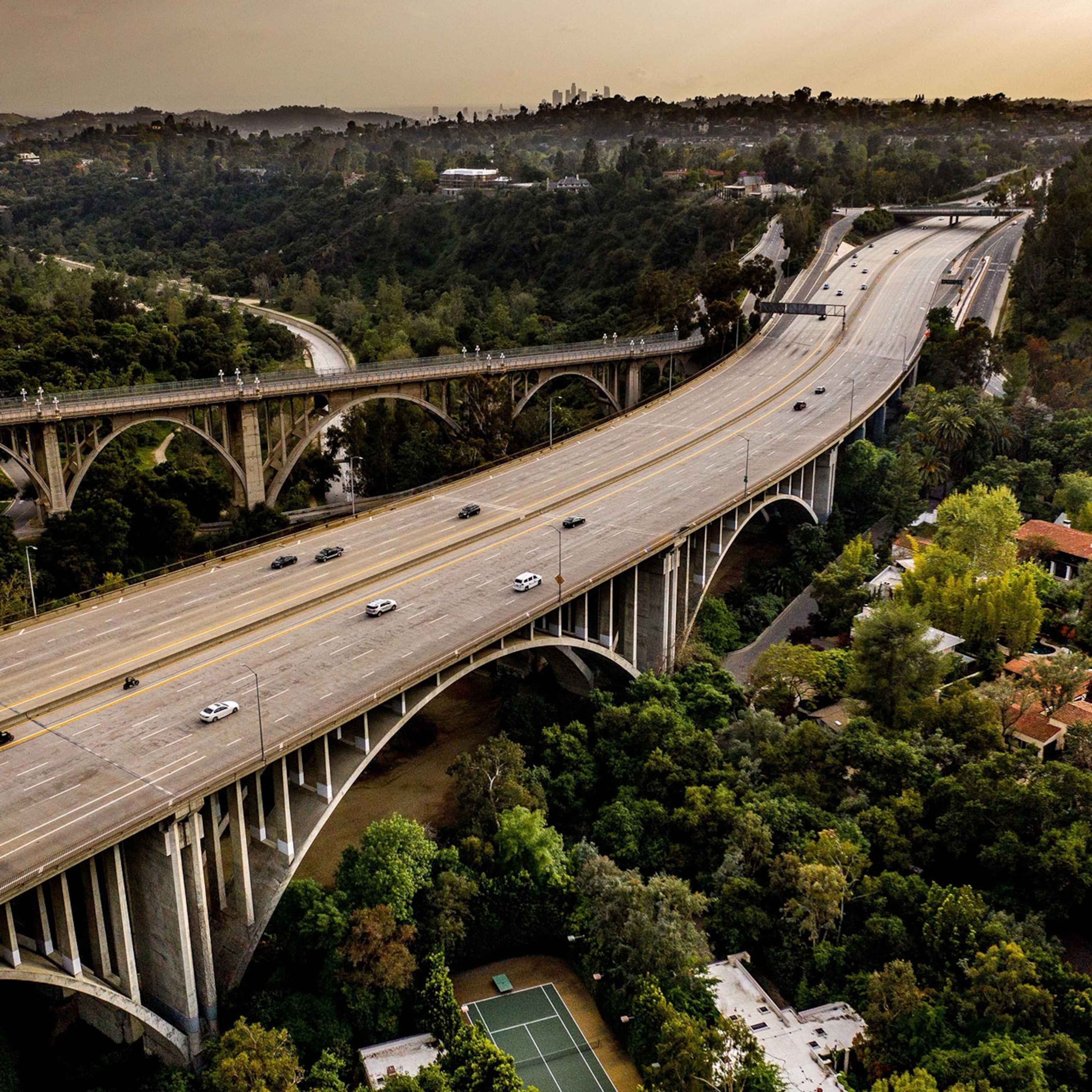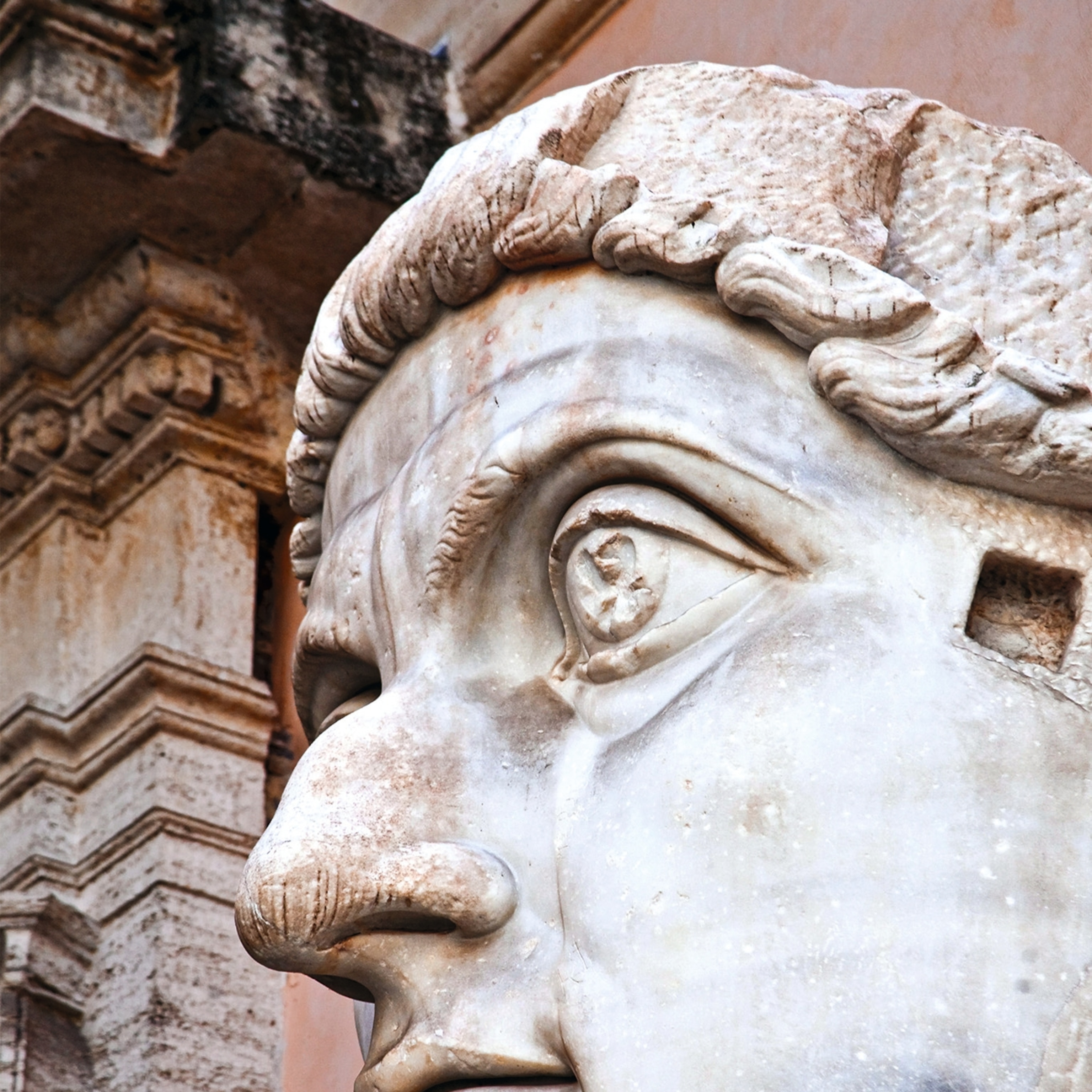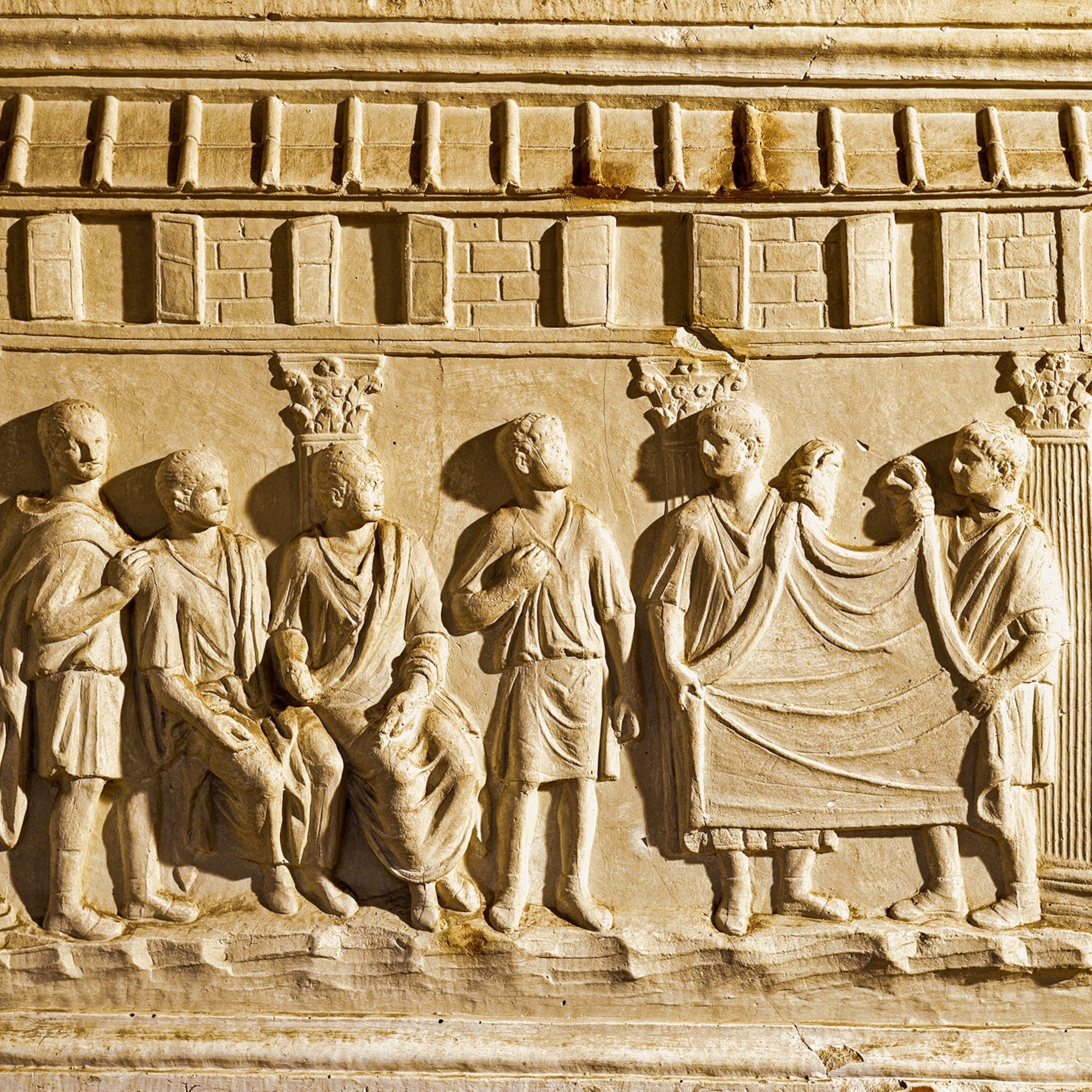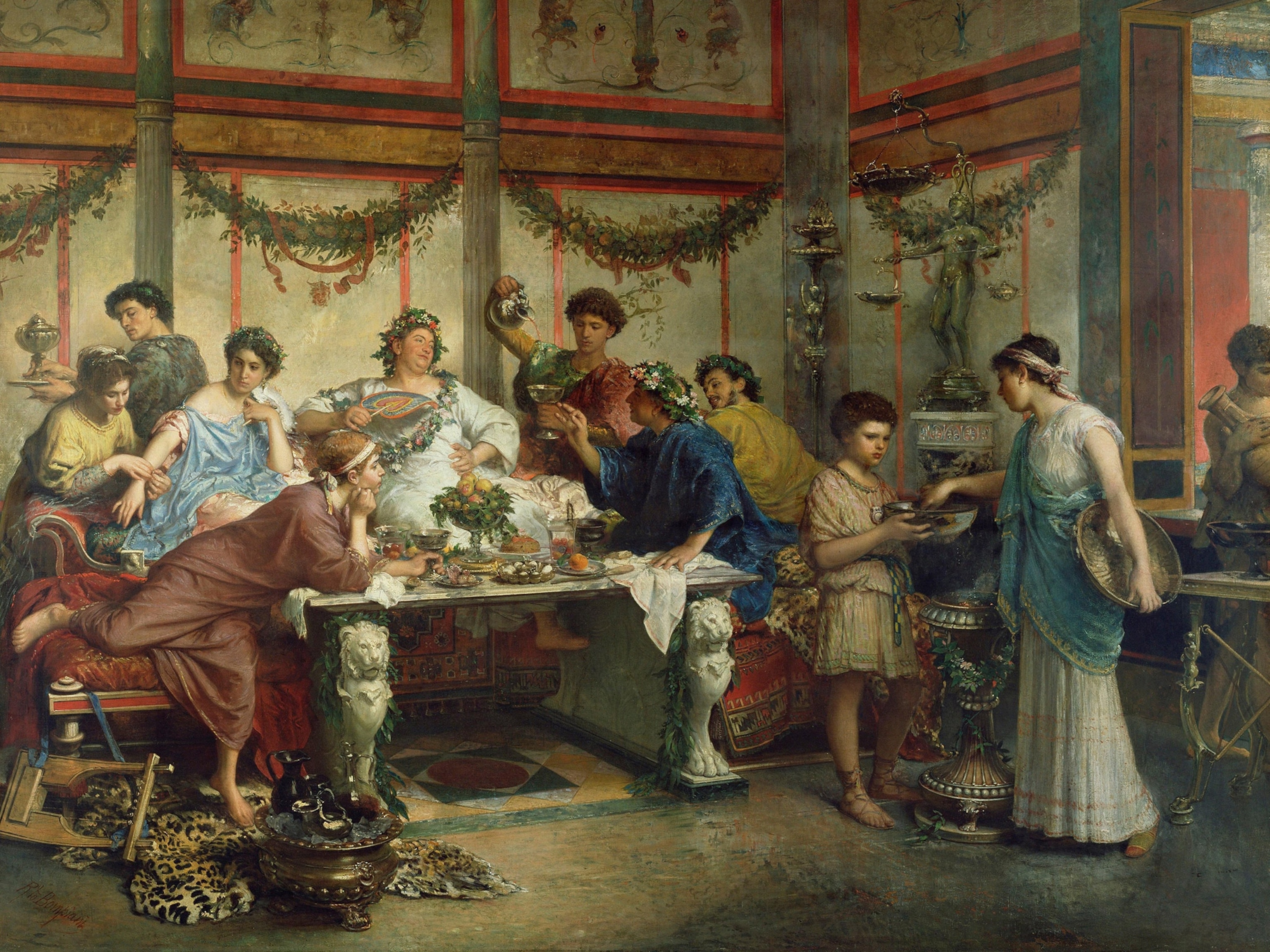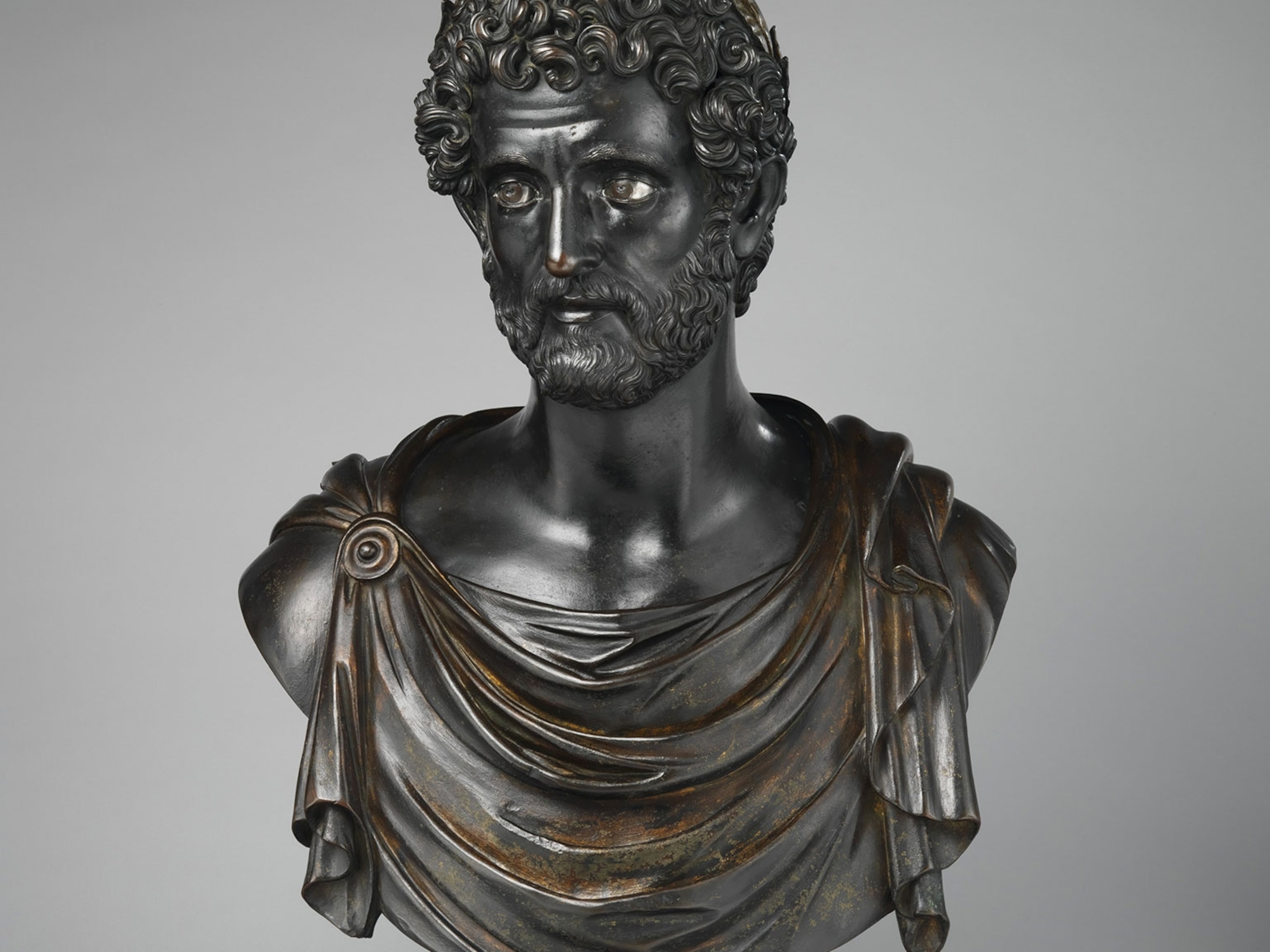200,000 miles of Roman roads provided the framework for empire
Built during the republic and empire, a vast network of roads made moving goods and troops easier through all corners of the Roman world.

Ancient Rome was famous for many things, many of them big and flashy. Gladiators, triumphs, and emperors often spring to mind, but perhaps Rome’s most enduring contribution to history is more humble: their roads (which all led back to Rome), a vast, interconnected network spanning as many as 200,000 miles at its maximum.
Across Europe, parts of North Africa, and the Middle East, the remnants of these roads can be found crisscrossing the landscape, from Scotland to Mesopotamia, from Romania to the Sahara. Rome’s earliest roads were built to connect the city on the Tiber with other cities on the Italian Peninsula. As Rome’s influence grew, their system of roads expanded too. They became arteries connecting new territories and their peoples to Roman civilization and eventually the Roman Empire. Some 30 roads from all points of Italy connected with Rome, many bearing the names of their builders, such as the Appian Way named for Appius Claudius, or the names of their destinations, such as the Ardeatina Way that led to Ardea, about 24 miles from Rome.
Roads were Rome’s “DNA” from the very beginning. Begun in 451 B.C. and finished a year later, the Lex XII Tabularum, or Law of the Twelve Tables, was the earliest set of written policies. Inscribed on 12 bronze tables, they spelled out procedures for trials, property ownership, crime and punishment, and civil rights. They also included rules for the road, setting a standard width of eight Roman feet for straight roads and 16 for curved ones (one Roman foot is slightly longer than a foot in the modern Imperial system).
The Appian Way
The Via Appia, or Appian Way, is perhaps the most famous Roman road. Paved with large basalt slabs, it was built in the fourth century B.C. at the direction of Censor Appius Claudius. At first, the road connected Rome to Capua, about 132 miles away in the Campania region of Italy. By 244 B.C. the road had been extended south more than 200 miles to reach the port city of Brundisium (modern Brindisi) on the Adriatic coast of southern Italy. (See a fourth-century map where all roads really do lead to Rome.)

Because the road became the main conduit from Rome to the Adriatic ports and the Mediterranean, the Appian Way became a crucial component of Rome’s economy as well as its military. It was wide enough for two carts to pass in opposite directions or for five soldiers to march side by side. Building the Appian Way was a massive undertaking, but the excellent craftsmanship of the road was apparent for centuries. First-century A.D. Roman poet Statius called it longarum regina viarum (queen of the long roads). Writing hundreds of years after its construction, the sixth-century A.D. Byzantine historian Procopius also lauded its engineering:
It . . . is one of the most remarkable achievements because the stone, by nature very hard, did not exist in this part of the country and had to be transported from afar. The stones were smoothed and leveled, then cut into angular shapes and fitted one next to the other without the need to join them with bronze or any other thing. So they are so well nested and assembled that they have the appearance of a single compact mass . . . Despite the long period of time that has elapsed, and the continuous passage of so many carriages and beasts of burden, no stone has been displaced from its original position, nor has any been worn or lost its polish.
Ancient scholars of the Roman Republic have left detailed accounts of how roads were built— from contracts to construction. Roman historian Livy described how second-century B.C. censors Quintus Fulvius Flaccus and Lucius Postumius Albinus “were the first to award contracts to pave roads in the city with stone, with gravel on the sides, and to build curbs as well as bridges in many places.”

First-century A.D. Greek biographer Plutarch’s biography of Gaius Gracchus, one of the Roman Republic’s most significant politicians, offers rich insights into roadbuilding. A plebeian tribune in the second century B.C., Gracchus made
road-building his main focus, joining utility and beauty in roads that traversed the land in a straight line, without turns or detours, and foundations made of cut stone, reinforced with layers of sand or compacted gravel. The depressions were filled and bridges were built over the rivers and streams, the two sides at the same height and always parallel, so that the entire work had a uniform and beautiful appearance. In addition, he measured the entire road and at the end of each mile, or roughly 5,000 feet, he put a stone column that served as a signal to the travelers.
During the republic, road construction was the responsibility of the censors (so-called because they maintained a census of Roman citizens). In the event of urgently needed road repairs, a curator could be appointed to supervise the work; in 67 B.C., for example, Julius Caesar was curator of the Appian Way. After his victory over Mark Antony in 31 B.C., Emperor Augustus took charge of repairing all the damage that a century of civil wars had caused roadways. After becoming superintendent of roads and in 20 B.C., Augustus appointed magistrates (the curatores viarum) to supervise the roads, with the responsibility of awarding contracts and overseeing construction and maintenance work. The budget to carry out these works came from taxes, tolls, and private or imperial patronage, as was the case with the Via Traiana, financed by the emperor Trajan, which replaced the Appian Way as the main road between Benevento and Brindisi. The cities through which a road passed also had the obligation to contribute to its maintenance. (A road built by biblical villain Pontius Pilate has been uncovered in Jerusalem.)
Road maps

Historians of Roman roads rely on “itineraries,” Roman documents that catalog the layout of the Roman roads, with the names of towns, lodgings,and distances between them. The main one is the Antonine Itinerary, perhaps from the time of Diocletian (r. A.D. 284-305), which includes a “road map” of Roman Britain. Another key source is the Peutinger Table (above), a medieval copy of a Roman road map in 12 sections, one of which is missing.
Building the roads

When planning to build a road, engineers studied the local topography and gathered information from residents. They then plotted out the most logical course, prioritizing straightness and moderate slopes. When crossing flat land, the road was as straight as possible: the ancient Appian Way, between Rome and Terracina, includes an uninterrupted straight line 56 miles long.
In hilly terrain attempts were made to even out the elevation through cuttings, bridges, and viaducts. In mountainous areas the engineers made wide curves, adapting to the land to maintain uniform slopes. In high mountains they used tight turns and even tunnels. Whenever possible, the road was laid out on the eastern and southern slopes to take advantage of the greater amount of sunlight to prevent winter snowfalls from impeding travel. (These 10 ancient highways wrap around the world.)
After a public bidding process, private contractors would be awarded the project to build a road. They hired laborers but also relied on enslaved people and criminals sentenced to forced labor. Sometimes they used the army and military engineers to design or direct the work. Legions also built roads as part of military operations and in conquered areas. Sometimes, when a legion was inactive, the commanders, or legates, decided to put the soldiers to work on road construction, as did the consul Gaius Flaminius, for example, whose men built the Flaminian Way from Rome over the Apennine Mountains to Ariminum (Rimini) in 220 B.C.



Ideally, the materials for road construction came from nearby quarries; if not, they might have had to be imported. The work began by clearing the ground of trees, rocks, and everything that could be an obstacle. The soil was drained, and rainwater runoff was diverted through channels and sewers. Then a ditch was dug and filled with large, loosely placed stones that allowed drainage. Medium-size boulders were added to compact the layer below and fill in large gaps, on top of which a layer of sand and gravel was spread to provide a more comfortable surface for carts. These layers, which elevated the road above the surrounding terrain, were then compacted and hardened with water, hand tampers, and a large stone roller. The road was then flanked with curb stones. To the sides of the curbs large ditches were dug to receive the runoff from rain, a road’s greatest enemy. (Discover the secrets of London’s oldest Roman road.)

To complete the work, cylindrical stone posts were placed at intervals of one Roman mile (measured by a thousand steps, or the milia passum). These milestones, which could stand over eight-feet high, marked the distances and gave credit to the person who sponsored the road’s construction.
Today it can sometimes be difficult to identify an ancient road as Roman; because their building techniques were so successful, they were adopted again in the 18th century. In Roman times soldiers, farmers, and traders often wore shoes called caligae, which had studs on the bottom to protect their leather soles. Often these studs would fall off and get stuck in the road, leaving behind a valuable clue for future archaeologists to help prove a site’s Roman origins.
Resting easy
Roman roads not only allowed for easier transport of soldiers, supplies, and trade, but also supported the growth of new communities and services. Many Roman roads were topped with a final layer of gravel; when passed over by a continuous stream of soldiers and carts, the roads grew dusty. Second-century A.D. Roman historian Suetonius alludes to this in his biography of Emperor Caligula:
He started the march and did it with such precipitation that the Praetorian cohorts, by necessity and against custom, had to affix their badges on their baggage to be able to follow each other. As he traveled in a litter carried by eight men, the troops followed so slowly that he demanded that the inhabitants of neighboring cities sweep the road and water it to cut back on the dust.

To help travelers stay fresh, they could stop at a mansio, an official service establishment that sprang up along Roman roads. Hostels and relay stations were located at a distance equivalent to one day’s worth of travel, typically about 20 to 25 Roman miles. These facilities, grouped around a central courtyard, had stables and troughs for the horses, a place to eat, and sleeping quarters. Some offered public baths so travelers could wash off the dust. (A complex network of aqueducts quenched Rome's thirst.)
As the Roman Republic and then the empire expanded, so too did its network of roads. The roads built during the republic enjoyed a renaissance under Augustus who reinvigorated the system for building and maintaining the roads. Augustus understood the vital importance of these arteries, not only for moving armies and commerce along their paved paths, but also as a symbol: A network, created out of dazzling technical know-how, that united the growing empire, and brought its subjects the benefits of Roman rule. New roads were built in newly conquered lands in Britain and in Syria. Today many Roman roads have become the foundation for the major highways and byways in the former Roman world, a testament to the skill of the engineers who designed and built them.


